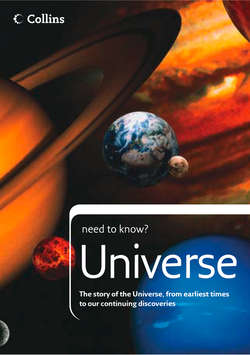Читать книгу Universe: The story of the Universe, from earliest times to our continuing discoveries - Peter Grego - Страница 26
Stellar neighbourhood
ОглавлениеA cube measuring 100 x 100 x 100 light years centred on the Sun takes in a sizeable portion of the local stellar neighbourhood, including many of the sky’s brightest stars, from Rigil Kent (4.4 light years away) out to Capella (42 light years away).
Rigil Kent, otherwise known as Alpha Centauri, is the brightest star in the constellation of Centaurus. It is like the Sun in terms of age, size, colour and luminosity, but because it is so near to us it appears as the sky’s fourth brightest star. Alpha Centauri is gravitationally bound to two other stars – a smaller orange star called Alpha Centauri B and a diminutive red dwarf known as Proxima Centauri. Of the three, Proxima is slightly the nearer; at 4.22 light years, it is the nearest star to the Sun. Could planets exist in orbit around Alpha Centauri? Since Alpha Centauri B orbits its brighter neighbour at a distance equivalent to the Sun and Uranus, Alpha Centauri wouldn’t be able to hold on to any planets further away from it as Jupiter is to the Sun, as their orbits would be gravitationally disrupted by Alpha Centauri B.
The Sun, just an ordinary star among its stellar neighbours.
The spiral structure of our galaxy can only be appreciated when viewed from above its plane.
